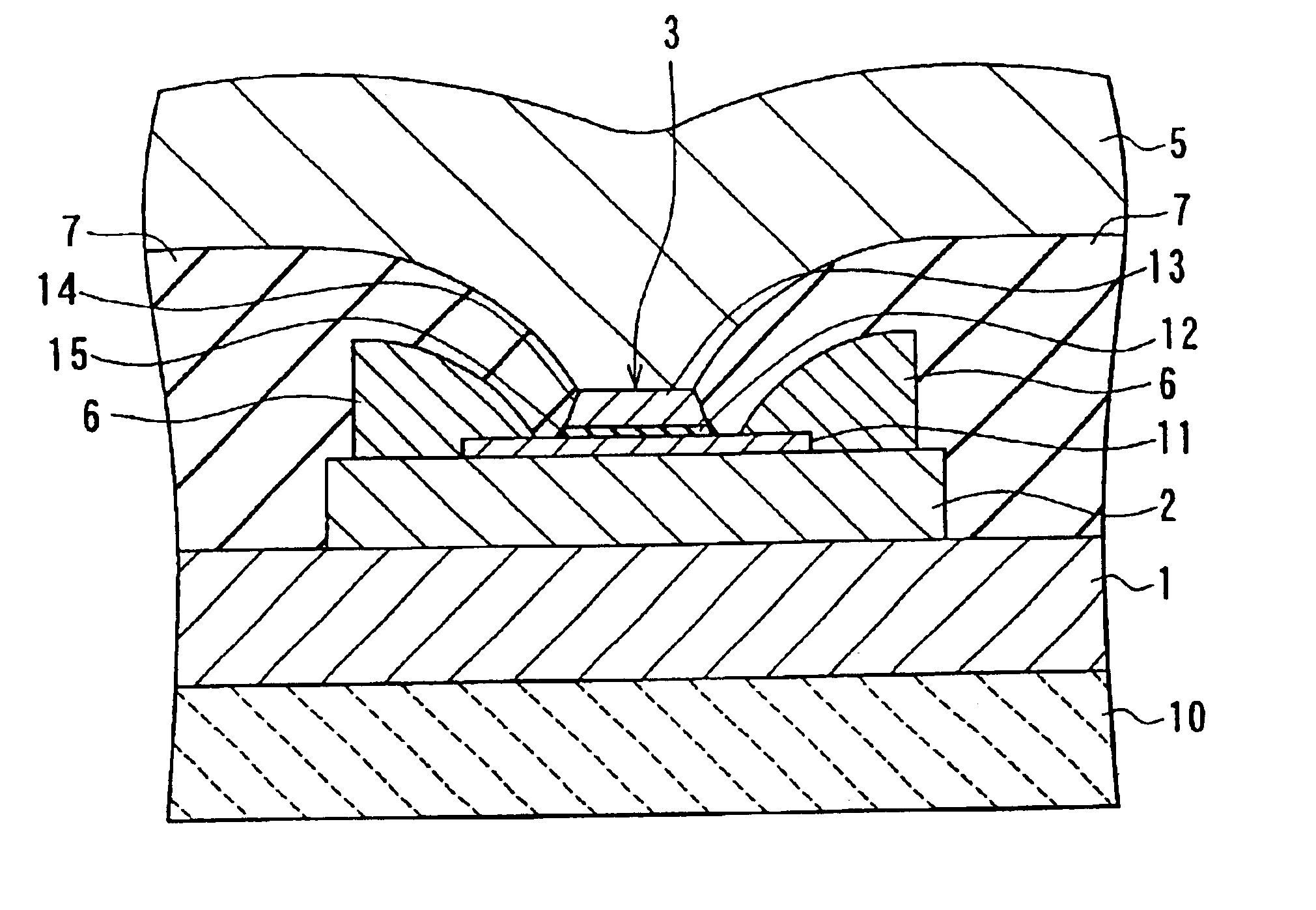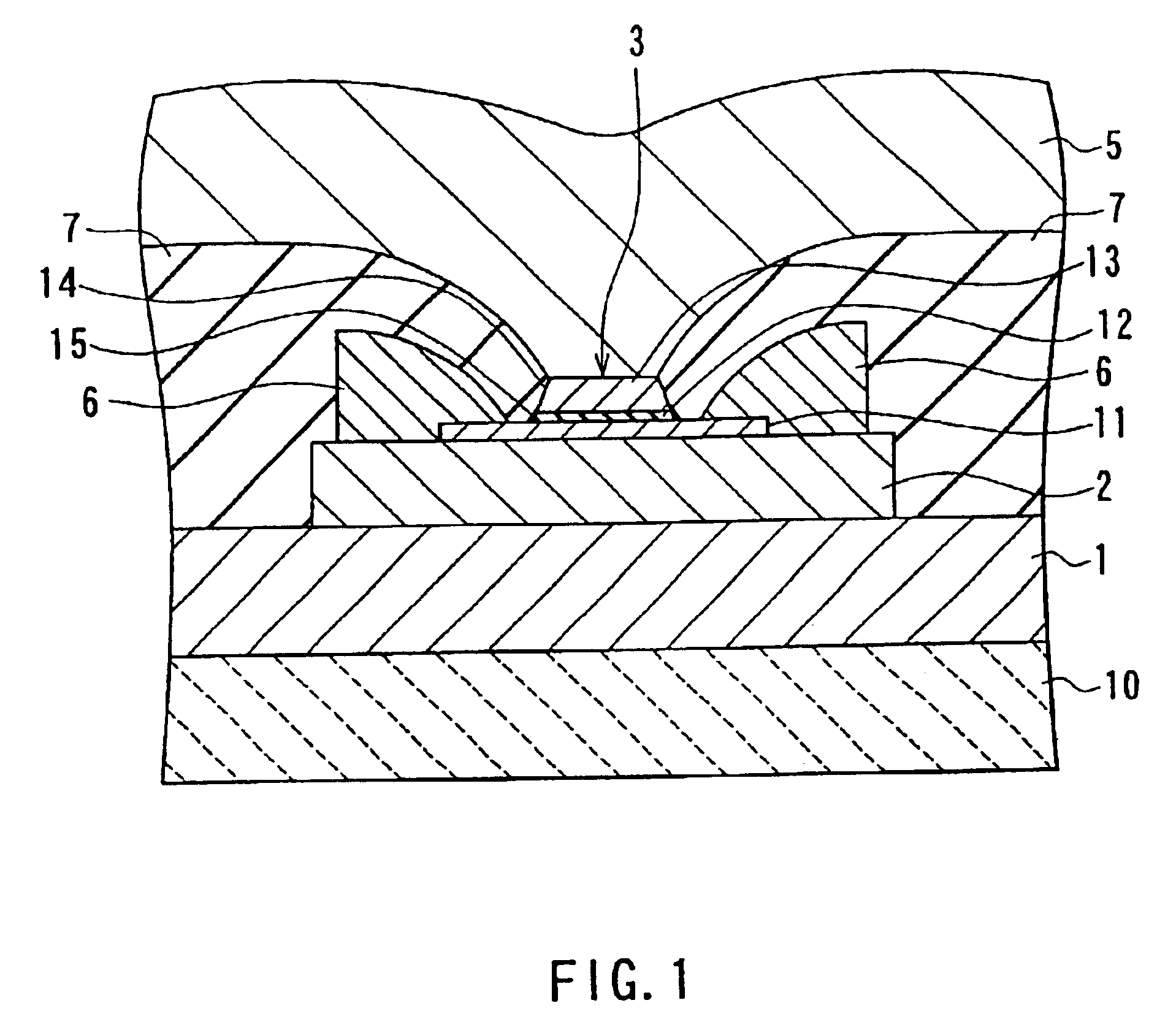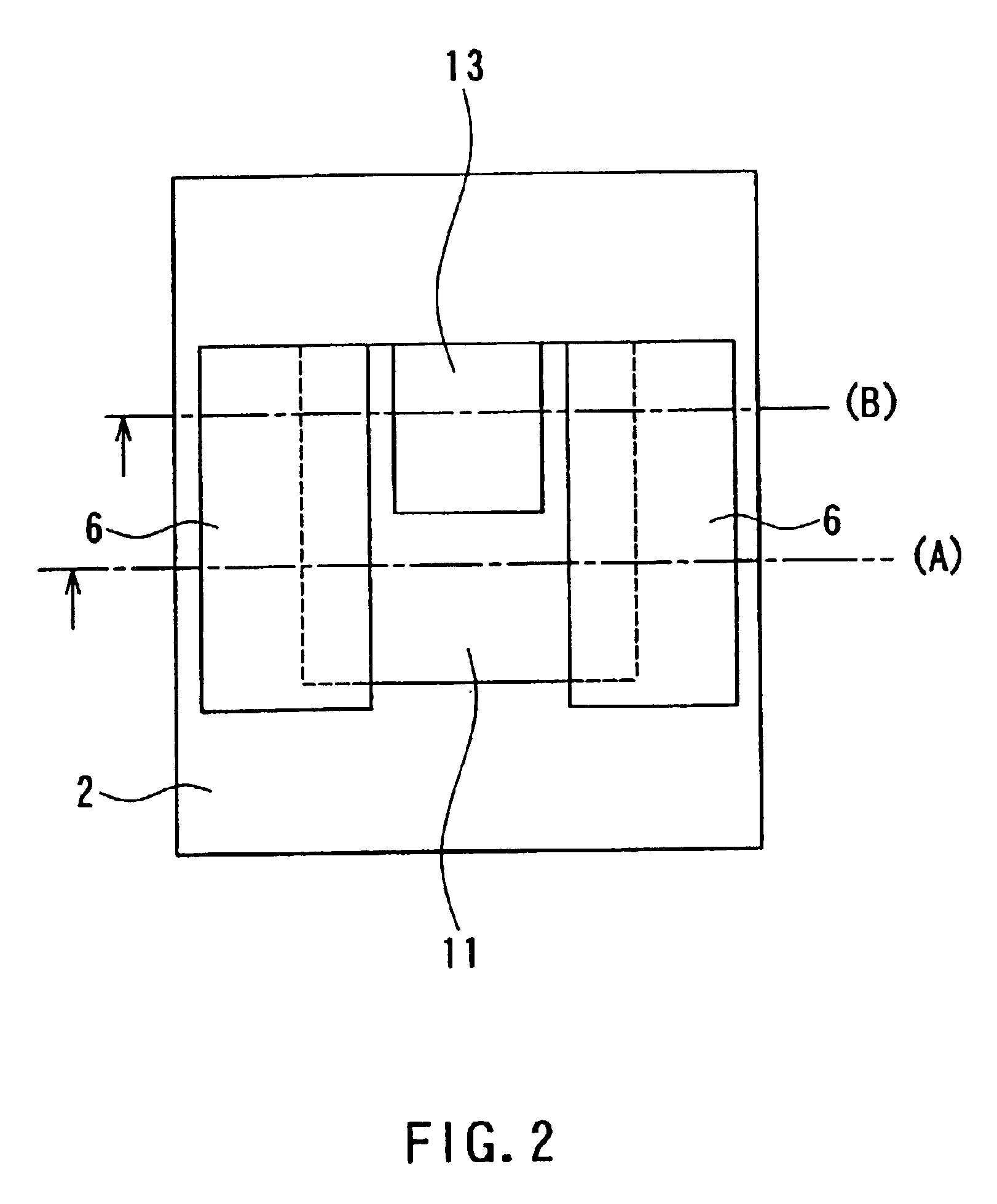Methods of manufacturing a tunnel magnetoresistive element, thin-film magnetic head and memory element
- Summary
- Abstract
- Description
- Claims
- Application Information
AI Technical Summary
Benefits of technology
Problems solved by technology
Method used
Image
Examples
first embodiment
[First Embodiment]
[0064]Reference is now made to FIG. 1 and FIG. 2 to describe an example in which configurations of a tunnel magnetoresistive element and a thin-film magnetic head of a first embodiment of the invention are shown. FIG. 1 is a cross section illustrating the configuration of the thin-film magnetic head of this example. FIG. 2 is a top view of the head shown in FIG. 1. FIG. 1 is the cross section parallel to a medium facing surface that faces toward a recording medium. FIG. 2 illustrates the state before the medium facing surface is formed. According to the head of this example, the structure shown in FIG. 2 is polished from the bottom part of FIG. 2 to the level indicated with alternate short and long dash line (A) or (B) to form the medium facing surface.
[0065]The thin-film magnetic head of this example functions as a reproducing (read) head that reproduces data magnetically recorded on a recording medium. The thin-film magnetic head comprises: a lower-electrode-cum-...
second embodiment
[Second Embodiment]
[0117]A second embodiment of the invention will now be described. A TMR element and a thin-film magnetic head of this embodiment are similar to those of the first embodiment except that the deposition layers are replaced with deposition layers made of a material that is separated through etching and deposits on the sidewalls and undergoes nitriding. A method of manufacturing the TMR element and a method of manufacturing the thin-film magnetic head of the second embodiment include nitriding to increase the resistance value of the deposition layers, in place of the oxidation of the first embodiment.
[0118]Reference is now made to FIG. 29 to FIG. 34 to describe experiments performed to determine preferable conditions for nitriding of the second embodiment. The elements used for this experiment were similar to the ones used in the experiments of the first embodiment.
[0119]FIG. 29 shows the relationship among the joint areas, the resistance values of the TMR elements, a...
third embodiment
[Third Embodiment]
[0128]A memory element and a method of manufacturing the same of a third embodiment of the invention will now be described. FIG. 35 is a cross section illustrating the configuration of the memory element of the embodiment. The memory element makes up each of memory cells of a nonvolatile magnetic random access memory (hereinafter called MRAM). The MRAM comprises a plurality of bit lines 31 and a plurality of word lines 33 arranged in a matrix. Each of the memory cells of the MRAM, that is, the memory element of this embodiment comprises the TMR element 3 located between one of the bit lines 31 and one of the word lines 33 at the intersection thereof.
[0129]The TMR element 3 of the embodiment includes the free layer 11, the tunnel barrier layer 12 and the pinned layer 13 stacked, as the element 3 of the first embodiment. In the third embodiment the TMR element 3 is placed such that the free layer 11 touches the bit line 31. An insulating layer 32 is provided between ...
PUM
| Property | Measurement | Unit |
|---|---|---|
| Electrical resistance | aaaaa | aaaaa |
Abstract
Description
Claims
Application Information
 Login to View More
Login to View More - R&D
- Intellectual Property
- Life Sciences
- Materials
- Tech Scout
- Unparalleled Data Quality
- Higher Quality Content
- 60% Fewer Hallucinations
Browse by: Latest US Patents, China's latest patents, Technical Efficacy Thesaurus, Application Domain, Technology Topic, Popular Technical Reports.
© 2025 PatSnap. All rights reserved.Legal|Privacy policy|Modern Slavery Act Transparency Statement|Sitemap|About US| Contact US: help@patsnap.com



